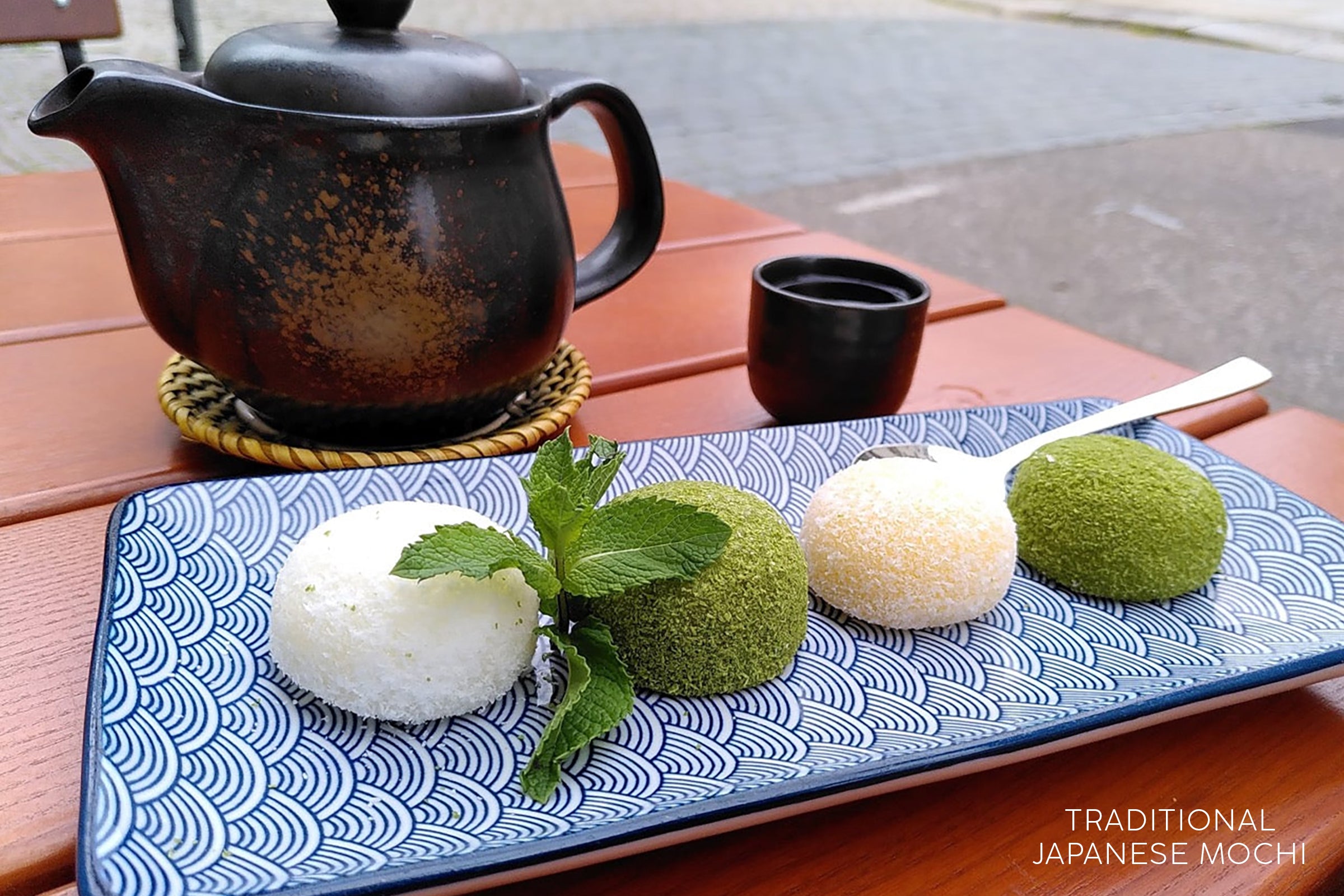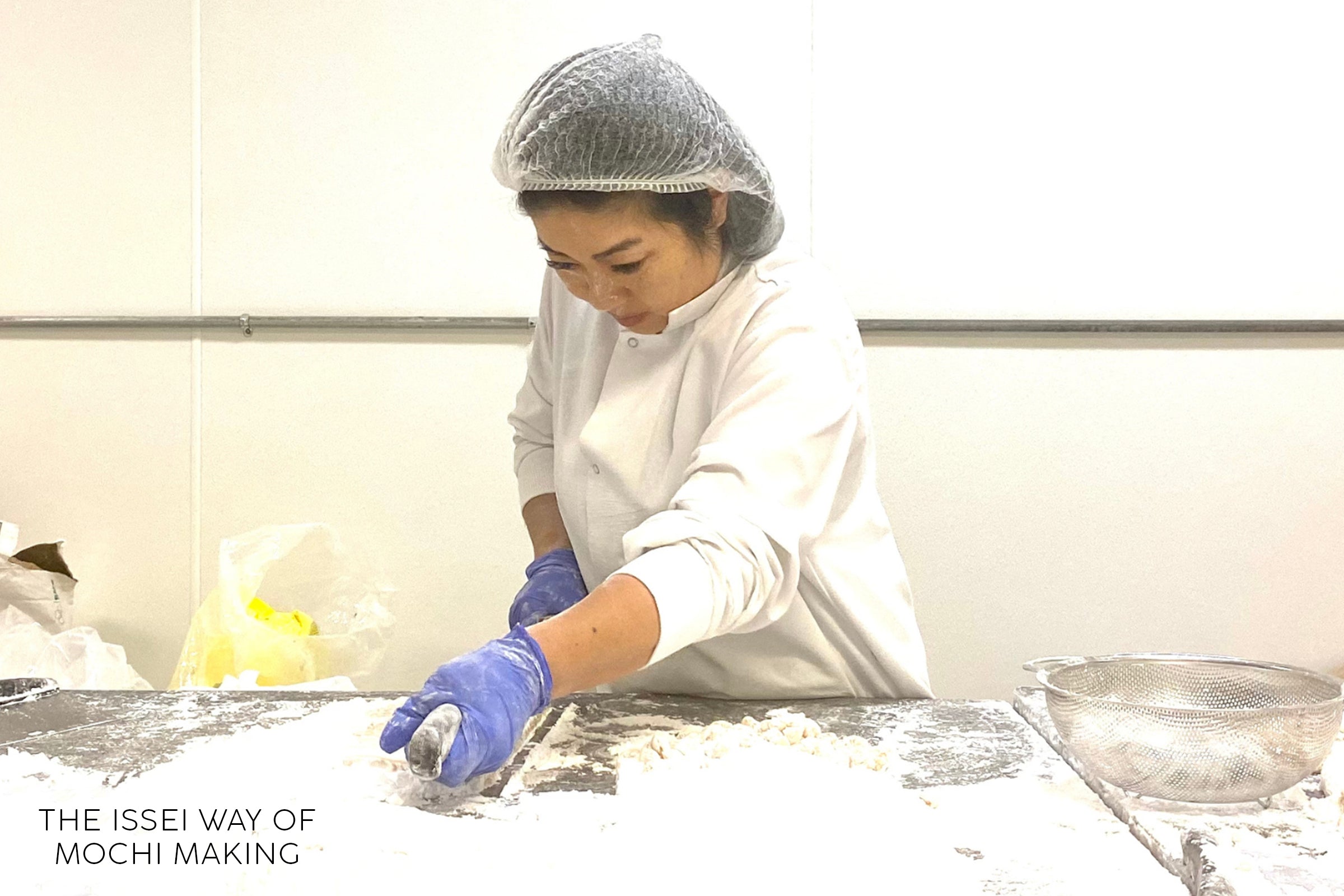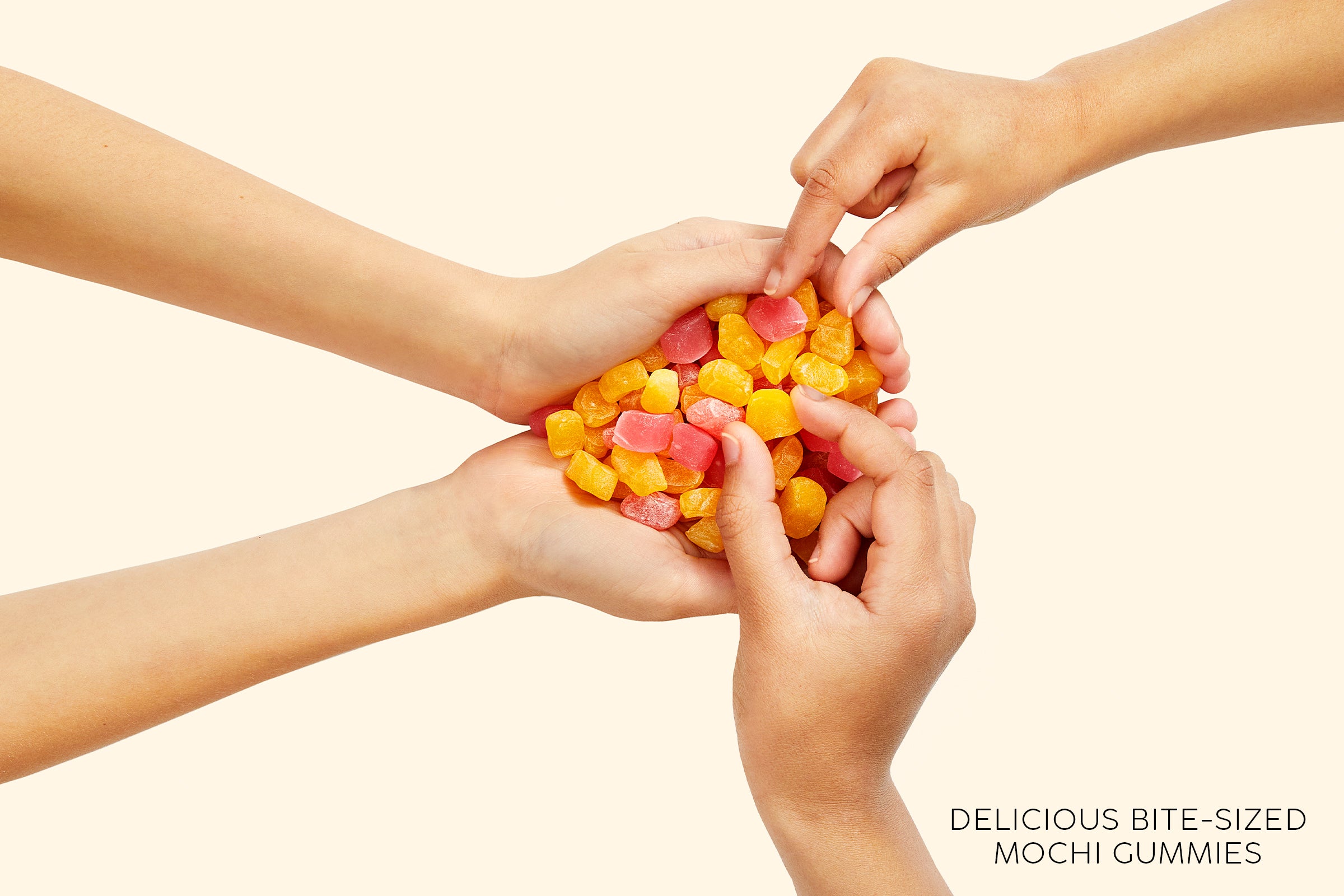WHAT IS MOCHI [MOH-CHEE]?
MOCHI: AN ANCIENT JAPANESE SNACK
An ancient Japanese snack, mochi has been in the food culture of Japan since 14,000-300 B.C. There are dozens of mochi varieties, and while many are made with pounded rice, many types of mochis are also made with different kinds of starches other than rice. Mochi is therefore defined more for its texture rather than for its ingredients. It is considered a sacred food for the gods, with people bringing neatly piled mounds of decorated mochis to shrines as offerings to the Shinto Gods for the New Year. It symbolized longevity, well-being and prosperity.
Today, it is a food for celebrations, gatherings and expressions of gratitude, bringing communities and families together.


DIFFERENT KINDS OF MOCHI
While mochi can be made with rice, there is a wide range of mochi varieties made with different kinds of ingredients and lasting for over a millenia with rich histories of origin and region-specific. The common denominator uniting all of these mochi varieties is the chewy, soft, sticky texture.
Daifuku Mochi: Daifuku is a filled mochi with an outer layer of chewy rice cake wrapped around a sweet filling. Traditionally, Daifuku is filled with anko (a sweet paste made from red Azuki beans) for its sweetness, since Daifuku mochi itself is a neutral cake, void of sugar or flavor. Today, there are many different kinds of Daifuku, with fresh strawberries, ice cream, or soybeans as fillings.
Warabi Mochi: Warabi Mochi is a mochi made with bracken starch from the stems (rhizomes) of a wild plant (Ferns) that is harvested, dried and cooked. Due to the exorbitant price of bracken starch, Warabi Mochi is also often made with potato starch. It has a light, fluffy, jelly-like chewy texture with a transparent look. Often dusted with nutty kinako (roasted soybean flour), matcha Warabi mochi can be dusted with matcha powder and other flavors.
Kuzu Mochi: Similar to Warabi Mochi, Kuzu Mochi is not made with rice but with a starchy powder sourced from another plant. Kuzuko, extracted from Kuzu (Pueraria) plant, is a popular thickening agent used in various Japanese dishes. Kuzu Mochi is closer to a jelly in consistency and is often served with syrup. Kuzu mochi is largely a seasonal dish, with chilled gelatinous cubes covered in sweet brown sugar syrup and toasted soybean flour considered an ideal summer dessert.
Kagami Mochi: A ceremonial mochi that is traditionally served at Kagami Biraki, a “mirror-breaking” ceremony held on January 11. Kagami Mochi is two mochi cakes stacked on top of each other, topped with a small mandarin.
Mizu Shingen Mochi: This delicate mochi does not contain any rice flour, or any kind of starch flour at all. It’s a clear jelly made only with water and agar-agar (seaweed) and is known as Japanese Raindrop Cake. Although it does not have any characteristics of a traditional mochi, it is considered to be a top-tier delicacy and a treasured mochi cake.
Ohagi Mochi: Bota Mochi is an inside-out Daifuku Mochi - with the Anko on the outside and mochi cake on the inside - an inverted daifuku.
Sakura Mochi: Sakura (cherry blossom) mochi is a pink colored unpounded sweet rice ball wrapped with pickled cherry tree leaf - hence the name. It is, unsurprisingly, appreciated especially around Japan’s Cherry Blossom festivals.
Kusa Mochi: Kusa Mochi is made with sweet rice flour mixed with Japanese mugwort (Yomogi) paste. It’s sweet, stretchy, and sticky, like regular mochi, but has a deep green color and a delicate, grassy flavor. Kusa mochi is considered a seasonal dessert and is most often enjoyed in springtime.
Habutae Mochi: Habutae Mochi is a very thin rice dough. A neutral flavored mochi, this kind of mochi is most commonly served simply with sugar alongside tea.
Hishi Mochi: This is another celebratory mochi, which I personally have never seen consumed - only displayed for religious offerings - Hishi Mochi is a multi-colored diamond-shaped mochi served for the Japanese Girl’s Day (Hinamatsuri) - the Japanese Doll Festival. Hishi mochi consists of pink, white, and green layers, with the pink layer flavored with jasmine, the white layer flavored with water chestnuts, and the green layer flavored with Japanese mugwort.
Yatsuhashi Mochi: Originating in Kyoto and created around 1689. The thin layer of mochi dough is cut into squares and folded around a sweet filling to form triangles. The shape is deliberate: Yatsuhashi was named after a famous Japanese musician Yatsuhashi Kengo, and the form is supposed to resemble his Koto. While it can be found in various flavors, especially at souvenir stalls, cinnamon and red bean are the most popular Yatsuhashi flavors.
Kiri Mochi: Kiri Mochi is sold in hard, white, dried cubes. It is a dried mochi that needs to be cooked to be consumed. The drying process helps it maintain freshness for a longer period. They can be grilled, fried, stewed or cooked in sweet/savory soups,
ISSEI: FIRST GENERATION JAPANESE IMMIGRANTS IN THE U.S.
Issei means "first star" or "one life" in Japanese, and it specifically refers to "first generation Japanese immigrants in the U.S." This word embodies the hope of immigrants to bring the best of their heritage to their new home in America.
Issei represents holding onto the memories of our origins, with nostalgia and stories of the past often preserved through food. It's about creating a better future for ourselves and our families, embracing new ways while staying true to our roots.
Our first product line, Mochi Gummies, is a fusion of Japanese and American cultures, driven by innovation. It's our love letter to immigrant and minority communities who have contributed so much but often feel unseen. We are excited to innovate, create, and share our ideas with you, building a special community and telling our stories through food.


